
13 minute read
Air India’s $70 Billion Makeover Restructuring and revitalising for Air India: Interview with CEO Campbell Wilson
Since its inaugural flight in 1932, India’s oldest airline has had quite the journey. J.R.D. Tata, who made history as the first Indian to earn a commercial pilot license, founded what was originally known as Tata Airlines. By 1946, it had been renamed Air India and became a public company. Nationalization in 1953 led to a domestic air travel monopoly that lasted until the early '90s. The airline faced mounting financial issues over the years, and in 2021, it was privatized with Tata Group's US$2.3 billion acquisition. After more than 70 years under government control, Campbell Wilson, a 53-year-old New Zealander with a background in Singapore Airlines and its low-cost carrier Scoot, took on the challenge of transforming Air India into a modern competitor. Under his leadership, the airline has seen its revenue more than double, with Air India Connect also experiencing significant growth.
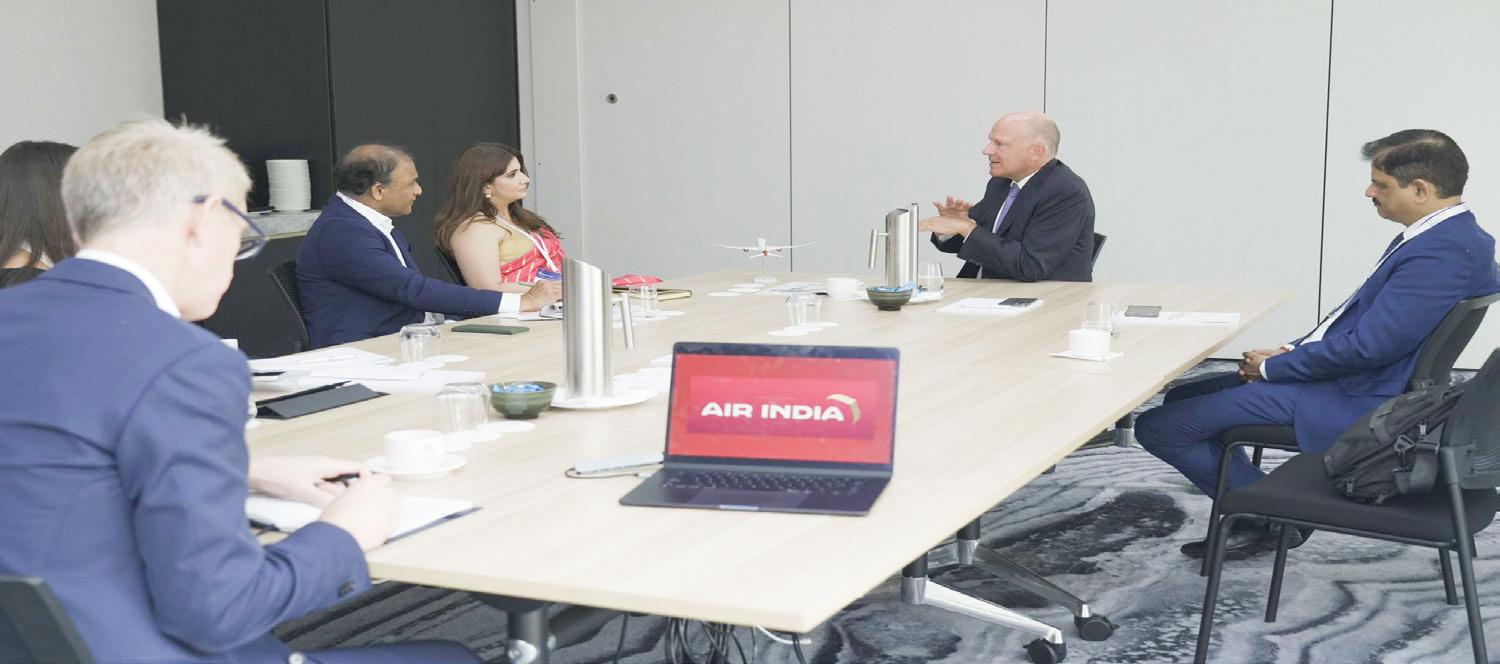
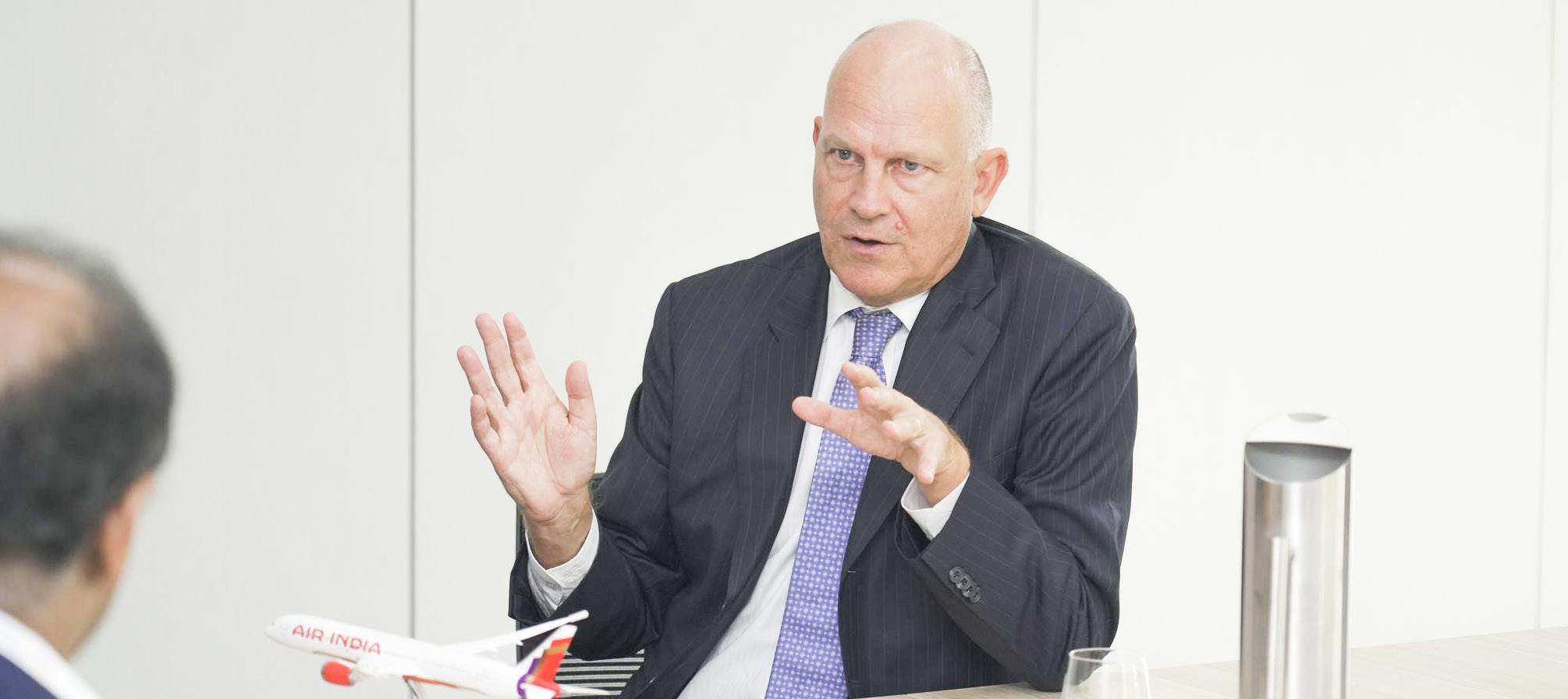
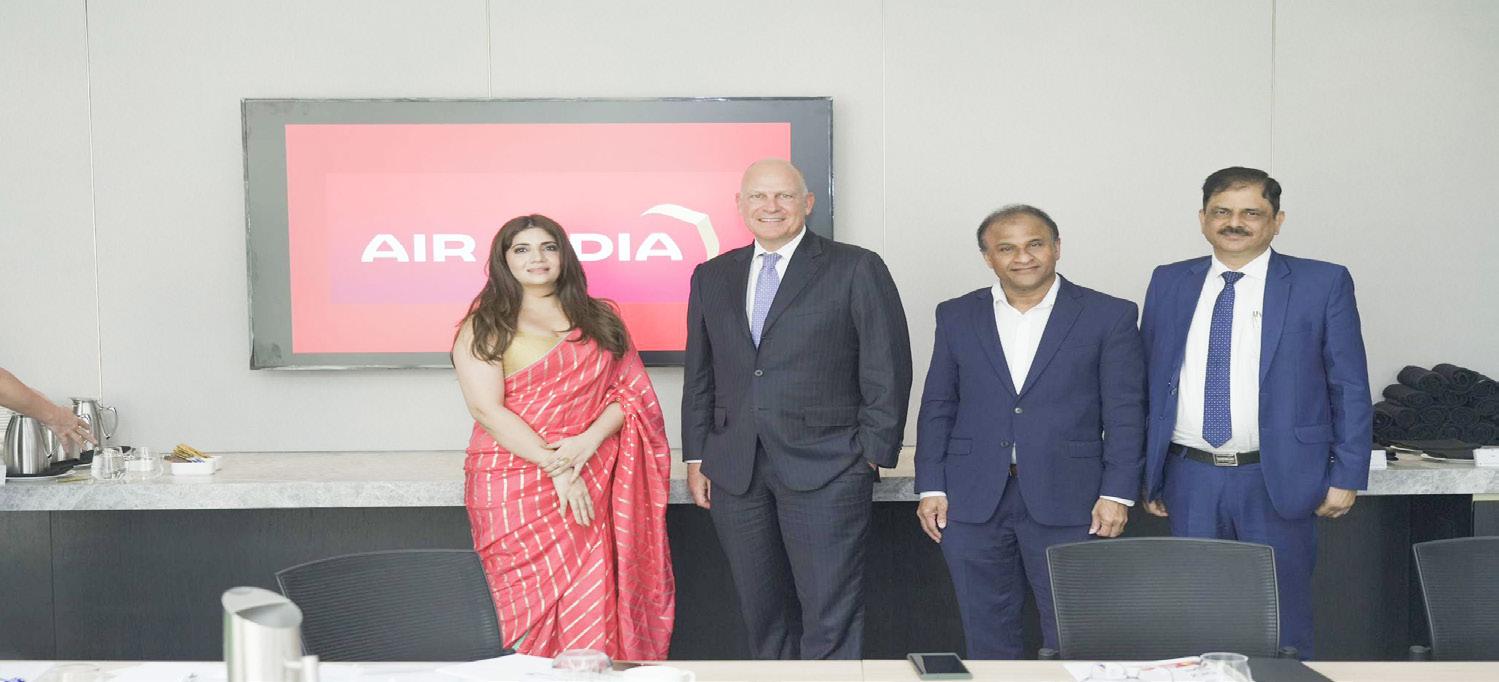
In an exclusive interview with Australia India News Chairman Dr Ram Mohan, and Associate Editor Kriti Bhardwaj, CEO of Air India Campbell Wilson spoke about Air India’s transformation with a $70 billion investment in modernizing its fleet and technology, aiming for enhanced service and sustainability. He also emphasized the challenge of completing the Vistara merger by November 12th while expanding the airline’s network and addressing community demands for direct flights.
Question: Air India has been undergoing a significant transformation since the Tata Group acquisition. Can you share specific milestones achieved under your leadership, and what challenges remain in revitalizing the airline?
Wilson Campbell: Prior to privatization, Air India was on an unsustainable path, lacking a private sector performance mentality and focus on consumer excellence. The airline had not recruited new IT or non-flying staff for nearly 15 years, resulting in an average employee age of 54 and a culture resistant to innovation.
Under my leadership, we’ve made significant strides. We’ve recruited thousands of new staff, reducing the average age to 34, and built a 600,000-square-foot training academy, alongside launching a new cadet pilot program with advanced technology. These changes have fostered a mindset shift and enhanced our capacity for training.
Our team, despite the rapid and challenging turnaround, has shown exceptional passion and capability. The challenge now is to maintain this momentum and continue evolving Air India into a modern, competitive airline.
Question: Given the highly competitive nature of the aviation market, how is Air India working with international carriers to expand its network, particularly in regions like Australia and Southeast Asia?
Wilson Campbell: In the highly competitive aviation market, Air India is focusing on strategic mergers and partnerships to enhance our network. We are merging Air India with Vistara to form a consolidated full-service carrier and combining AIX Connect with Air India Express to create a larger low-cost airline. These moves are designed to strengthen our market position and expand our reach.
By consolidating our operations, we aim to offer more robust services and improved connectivity, particularly in competitive regions like Australia and Southeast Asia. This strategic approach will enable us to better compete on a global scale and capitalize on emerging opportunities in these key markets.
Question: Amidst all the significant changes happening at Air India, what is the one thing keeping you up at night?
Wilson Campbell: (Laughs) As the CEO of an international airline, there's a lot that can keep me up at night, given the complexity of our operations and changes. However, the one thing that stands out is the upcoming go-live date for our merger services on November 12th. This date is critical because it marks the culmination of numerous dependencies and preparations that must be perfectly executed. From regulatory approvals to logistical transitions and booking systems, everything needs to be seamless and ready for the transition. Ensuring that all aspects are in place for a smooth go-live is a major focus and a significant challenge for my team
Question: Air India has placed one of the largest aircraft orders in recent aviation history. How will this new fleet shape the airline’s future growth, and what changes can passengers expect in terms of service and sustainability?
Wilson Campbell: The Tata Group has committed tens of billions to transform Air India, with a significant focus on investing in a new fleet of 470 aircraft, modernizing cabins, refreshing the brand, and enhancing customer service. This capital-intensive plan aims to address the airline's ageing fleet, which had been neglected for decades.
The recent addition of 36 leased aircraft, including 11 Boeing 777s and 25 Airbus A320s, allowed us to launch six new international routes and increase frequencies on 24 others. However, the cornerstone of our transformation is our ambitious order of 470 new Airbus and Boeing aircraft, costing $70 billion. This includes 140 A320neos, 70 A321neos, and 190 737 MAX aircraft. These new additions will enable us to operate one of the most advanced and fuel-efficient fleets in the industry within five years.
In parallel, we are investing $400 million to retrofit our existing fleet. The retrofit will initially focus on our narrow-body A320neo and A321neo aircraft, followed by a comprehensive overhaul of 40 legacy wide-body Boeing 777s and 787s with all-new interiors.
Passengers can expect several improvements as a result of these investments. We will introduce premium economy seats on selected long-haul flights and new food menus to enhance the onboard experience. These changes not only improve service but also contribute to our sustainability goals by incorporating the latest, fuelefficient technologies and modernizing our fleet. This comprehensive approach is designed to position Air India for substantial growth and better service in the dynamic Indian aviation market.
Question: The Indian aviation market is highly competitive and price-sensitive. How does Air India plan to differentiate itself from other domestic carriers, and what strategies are in place to maintain profitability while ensuring customer satisfaction?
Wilson Campbell: Air India plans to differentiate itself by expanding its network and leveraging its new widebody aircraft. As we grow, we are focusing on enhancing our longhaul routes, such as increasing flights between Delhi and London Heathrow, and adding new destinations in the US, like San Francisco and New York.
To compete with major domestic and international carriers, such as IndiGo and Middle Eastern airlines like Emirates and Qatar Airways, we are enhancing our service offerings and improving direct connectivity. Our new widebody aircraft, including the Airbus A350s, will enable us to provide more direct flights and better compete on long-haul routes.
Additionally, the upcoming merger with Vistara will boost our fleet with more widebody aircraft, further expanding our network and service capabilities. Our focus is on increasing capacity and frequency, particularly in key markets, which will help us maintain profitability while delivering a high level of customer satisfaction.
Question: Sustainability is becoming a key focus for airlines globally. What steps is Air India taking to reduce its this is a very busy market, and it's growing each year. We also know that those travellers aren't flying direct because there isn't currently a direct service. Many are coming via Singapore; some are going via Vietnam, and lots of other creative ways to get here.
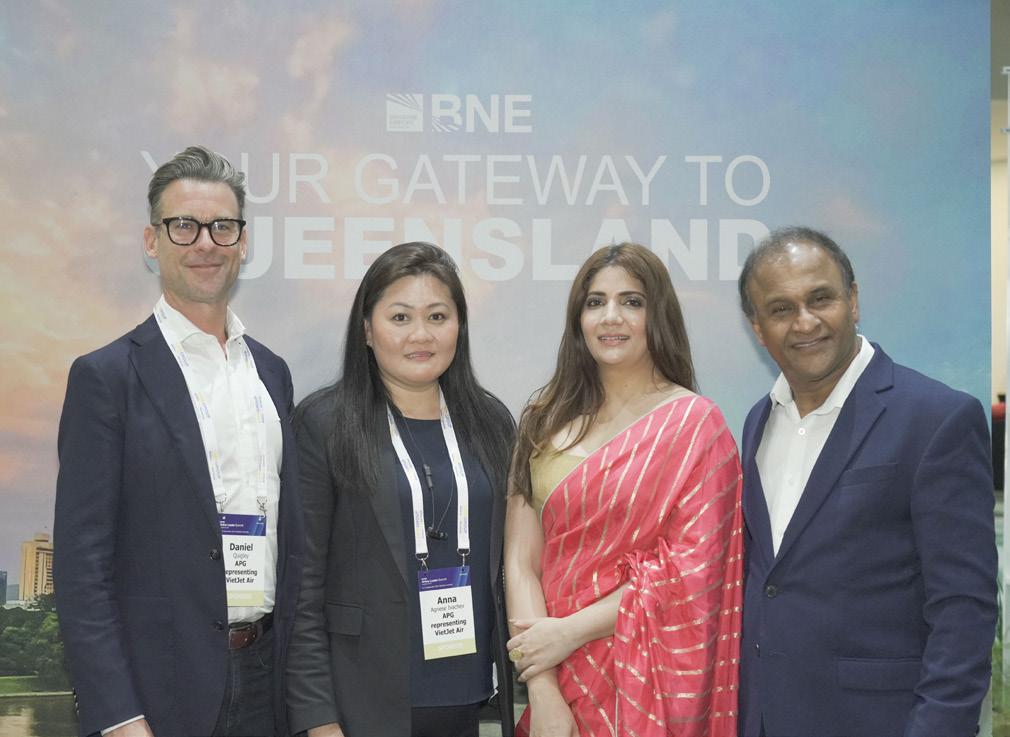
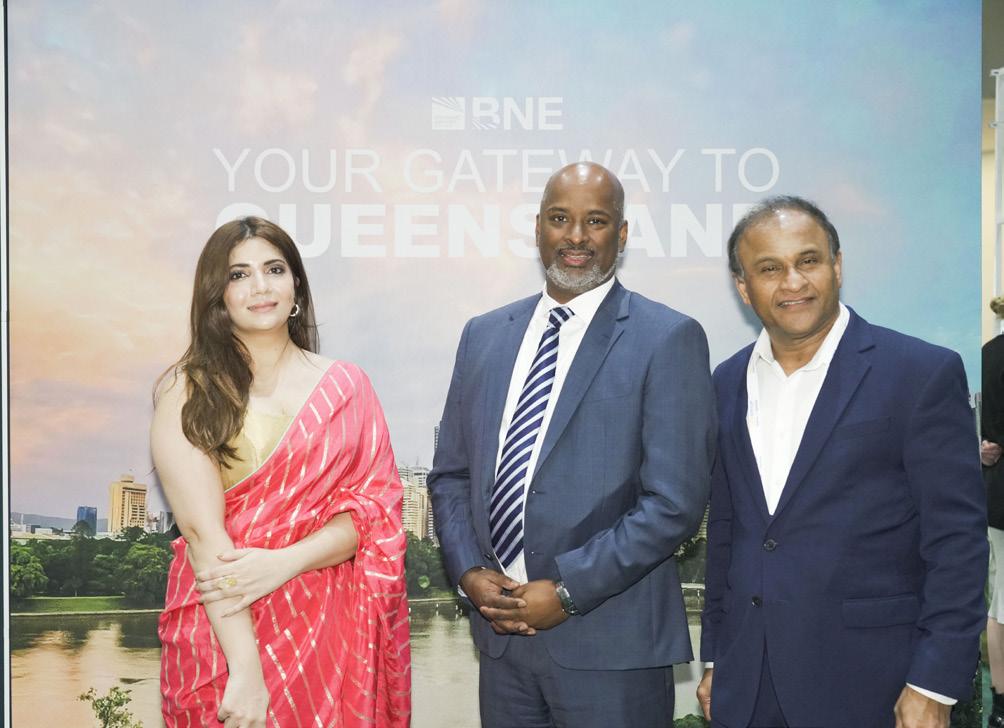
So you asked me about our hope. Our hope is that we will have direct flights to India. We know the community here wants that. We know there is a big business community growing in Brisbane that's Indian-based. Of all the trade that occurs in Australia with India, 68% of that happens with Queensland. So this is a really an important market. So not just for family, not just for friends, not just for travel, but for business, we would certainly love to see direct flights. And Brisbane Airport is talking to lots of partners. We do it regularly. We travel to India. We meet with people here. That's happening this weekend at this conference. So our aspiration is the same as the community's aspiration. It's something we want to see. But as we heard this morning, at the moment there's a shortage of aircraft. So when they're ready to say we'd like to come to Brisbane, we're ready to receive them, and we'll generously support them. So we have the same goal.
Kriti: That's impressive to hear, particularly the numbers that you've just mentioned; 68% of trade in Australia coming from Queensland. But putting it back to the visitor lens of people that come to Brisbane, whether from India or around the world, what would you say are your top three destinations out of Brisbane in Queensland?
Peter Doughty: So we know when people land in this city of Brisbane, they check out Brisbane, but they're also keen to head a little bit north and a little bit south. And just an hour south of Brisbane is the Gold Coast. So you see spectacular beaches, high-rise along the beach, a wonderful lifestyle. And we know lots of people who are coming from India are actually travelling to the Gold Coast. Some are going north to the Sunshine Coast, a little more laid-back, not so much high-rise, a bit chiller. They might be checking out Australia Zoo and checking out some of our wildlife. And some are going to North Queensland; further north, to experience the Great Barrier Reef, one of the true wonders of the world. So they're arriving in Brisbane, they're not just staying in Brisbane, they're spreading out. So I'd say Gold Coast, Sunshine Coast and the Barrier Reef would be three things to put on your bucket list to do.

Second interview
Kriti: I'm joined by Dan, representing VietJet. Welcome, Dan. VietJet being now increasingly a popular airline, with a lot of connectivity, what is it that you were looking to get out of the summit this week?
Dan: So, it's our second year representing VietJet at CAPA, and it's a wonderful event for bringing the whole aviation community together with a particular focus on the Australian market, which is terrific and needed. In terms of our connectivity, the Brisbane market is performing extremely well for VietJet as an Australian gateway to Vietnam and then onwards to the Indian gateways as well. We've seen a huge demand increase and growth over the last 12 months, and it's wonderful to see. For the Indian diaspora in Brisbane particularly, there's a lot of interest, and what we see is demand for stopover in Ho Chi Minh and maybe beyond for a quick holiday or their forward journey to India.
Kriti: Well, that's amazing to hear. I have experienced Vietjet quite recently, actually this year. I did not take the opportunity of stopping over, so that's obviously fantastic to know for our viewers to consider Vietnam for the next holiday, particularly to break the trip onwards to India or back. But in terms of the market, it's a fairly competitive system, aviation has always been competitive, more so than ever. Very pricedriven, but also at the same time, I think people are very sensitive of their experiences as well for longer journeys. So, how does Vietjet position itself apart from competing on price?
Dan: Sure, that's a terrific question. So, with Vietjet, in the Australian market, we pride ourselves on customer service. When I talk about customer service, it's from throughout the sales cycle and throughout the whole customer experience. So, the time a customer and our passengers will come to purchase the ticket, whether directly or with a travel agent, our team in Australia is Australian-based, and we are there for the passenger and the travel agent community across Australia to help make sure that their trip is optimized in Vietjet as much as possible.
Kriti: Thanks, Dan. And in terms of airline partnerships, is there any major reason that Vietjet already has partnerships with or envisions to?
Dan: At this point in time, in the Australian market, no. It's definitely in scope, keeping in mind that we've only been operating in Australia since last year. So, it's still early days for us, and we're definitely open to considering and looking at partnership opportunities across the whole sector.
Kriti: Well, it's great to know that you guys have achieved so much in just a year of operating in Australia. I'm sure I am personally going to fly with Vietjet again in the future. And, Dan, thank you so much for your time today.
Kriti: Hello, Tim. I've heard a lot about you as the CEO of Centre for Australia-India Relations. So thank you for your time. Tim, the first question I would like to ask you, how have you found the aviation summit so far?
Tim Thomas: Thanks, Krithi. Thank you for the opportunity. Look, I think the CAPA is an interesting global event, so I think it's always good to support Brisbane when it's hosting global events. But obviously, we're very interested to understand what can be more in terms of aviation links between Australia and India. That will, of course, help on trade and investment and for the diaspora and their needs. So obviously, we're here to support that.
Kriti: Thank you, Tim. And also, I think a great opportunity for us to learn more about your organization as well, which I'm sure has been around for a while. So I'd love to know what are your top challenges and maybe priorities for the upcoming year, and what can we look forward to?
Tim Thomas: So the center is the federal government's center of gravity on all of the efforts to uplift the relationship with India. So we look at it from an economic lens, from a diaspora lens, from a public policy lens, a cultural and sports lens. So some of the priorities, we have a very large matri program- grants program that will be launched later this month, and that will be supporting scholarships, fellowships, business research grants, cultural ties, sporting ties. So that's a big priority for us. The matri program has started off really well. Another priority is the summer of cricket. So we're going to be doing something with the Queensland government here in Brisbane around the Gabba test, on the sidelines of the Gabba test, around activating business linkages and cultural and tourism linkages with India.
Kriti: Awesome to know, Tim. And what do you think about this brand new venue that we're at, the Star Brisbane?
Tim Thomas: Obviously much awaited. It is impressive, isn't it? It's a beautiful facility and very much needed, I would say, great timing for Brisbane to have a convention center of this nature.
Kriti: Thank you so much, Tim, for your time, and I hope that we get to catch you again, hopefully in Brisbane or around the country.










